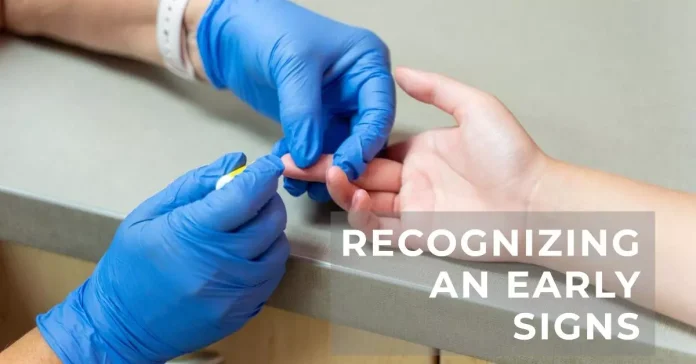The Human Immunodeficiency Virus (HIV) targets the immune system, potentially progressing to Acquired Immunodeficiency Syndrome (AIDS). Early detection is crucial for effective management and treatment, making awareness of the early signs of HIV/AIDS symptoms vital for individuals and communities.
Understanding HIV/AIDS
Unprotected sexual contact, sharing needles, and transmission from mother to child during childbirth or breastfeeding are the main ways through which HIV primarily spreads. AIDS, marking the advanced stage of HIV infection, occurs when the immune system undergoes severe damage. Address common misconceptions and emphasize that casual contact does not transmit HIV/AIDS.
Importance of Early Detection
Early detection plays a pivotal role in initiating timely medical interventions, improving the quality of life for those infected, and preventing further transmission. Access to treatment at an early stage can significantly extend life expectancy.
Common Early Signs and Symptoms
- Flu-Like Symptoms: Early HIV symptoms may mimic flu, with fever, fatigue, and body aches lasting several days to weeks.
- Swollen Glands: HIV can cause swelling in lymph nodes, noticeable in the neck, armpit, or groin.
- Skin Rashes: Some individuals may develop red or purple skin rashes, often on the torso.
- Sore Throat: Persistent sore throat, sometimes accompanied by mouth sores, can be an early indicator.
Less Common Signs
Though less frequent, a weakened immune system may lead to additional symptoms such as unintended weight loss, night sweats, and an increased susceptibility to recurring infections.
When to Seek Medical Attention
Individuals experiencing persistent symptoms or engaging in high-risk behaviors, such as unprotected sex or sharing needles, should seek immediate medical attention. To ensure early detection and timely intervention, we recommend undergoing HIV testing.
Prevention Strategies
- Safe Sex Practices: Encourage consistent and correct condom use during sexual activity.
- Regular Testing: Advocate for routine HIV testing, especially for those engaging in high-risk behaviors.
- Pre-Exposure Prophylaxis (PrEP): Highlight PrEP as a preventive measure for high-risk patients.
Conclusion
Recognizing early signs of HIV/AIDS symptoms is pivotal for prompt intervention. Encourage regular testing, safe practices, and a proactive approach to healthcare for a healthier future.
Frequently Asked Questions (FAQs)
What are the common early signs of HIV/AIDS?
Early signs include flu-like symptoms (fever, fatigue, body aches), swollen glands, skin rashes, and persistent sore throat.
Why is early detection of HIV/AIDS important?
Early detection allows timely medical intervention, improving treatment efficacy and life expectancy and preventing further transmission.
How is HIV transmitted?
HIV is primarily transmitted through unprotected sexual contact, sharing needles, and from mother to child during childbirth or breastfeeding.
Can HIV be transmitted through casual contact?
No, HIV/AIDS cannot transmit through casual contact. It requires a direct exchange of bodily fluids like blood or vaginal fluids.
When should someone seek medical attention for potential HIV symptoms?
Seek immediate medical attention if experiencing persistent symptoms or engaging in high-risk behaviors, such as unprotected sex or sharing needles.
What preventive measures can individuals take?
Encourage safe sex practices regular HIV testing, and consider pre-exposure prophylaxis (PrEP) for those at high risk.
Is HIV/AIDS curable?
Although a cure is not available, detecting HIV early and managing it can enable individuals to lead healthy lives with the virus.
Can HIV/AIDS be transmitted through kissing?
No, kissing does not transmit HIV. Specific bodily fluids such as blood, vaginal fluids, and breast milk primarily spread the virus.
Is there a connection between HIV and other sexually transmitted infections (STIs)?
Individuals with HIV may be at a higher risk of contracting other STIs. Safe sex practices and regular testing for both HIV and other STIs are crucial for overall sexual health.
What are the advancements in HIV/AIDS treatment and research?
Advances include antiretroviral therapy (ART) for effective viral suppression, and ongoing research explores new treatments, prevention methods, and potential vaccines. Staying informed is vital to accessing the latest developments.










